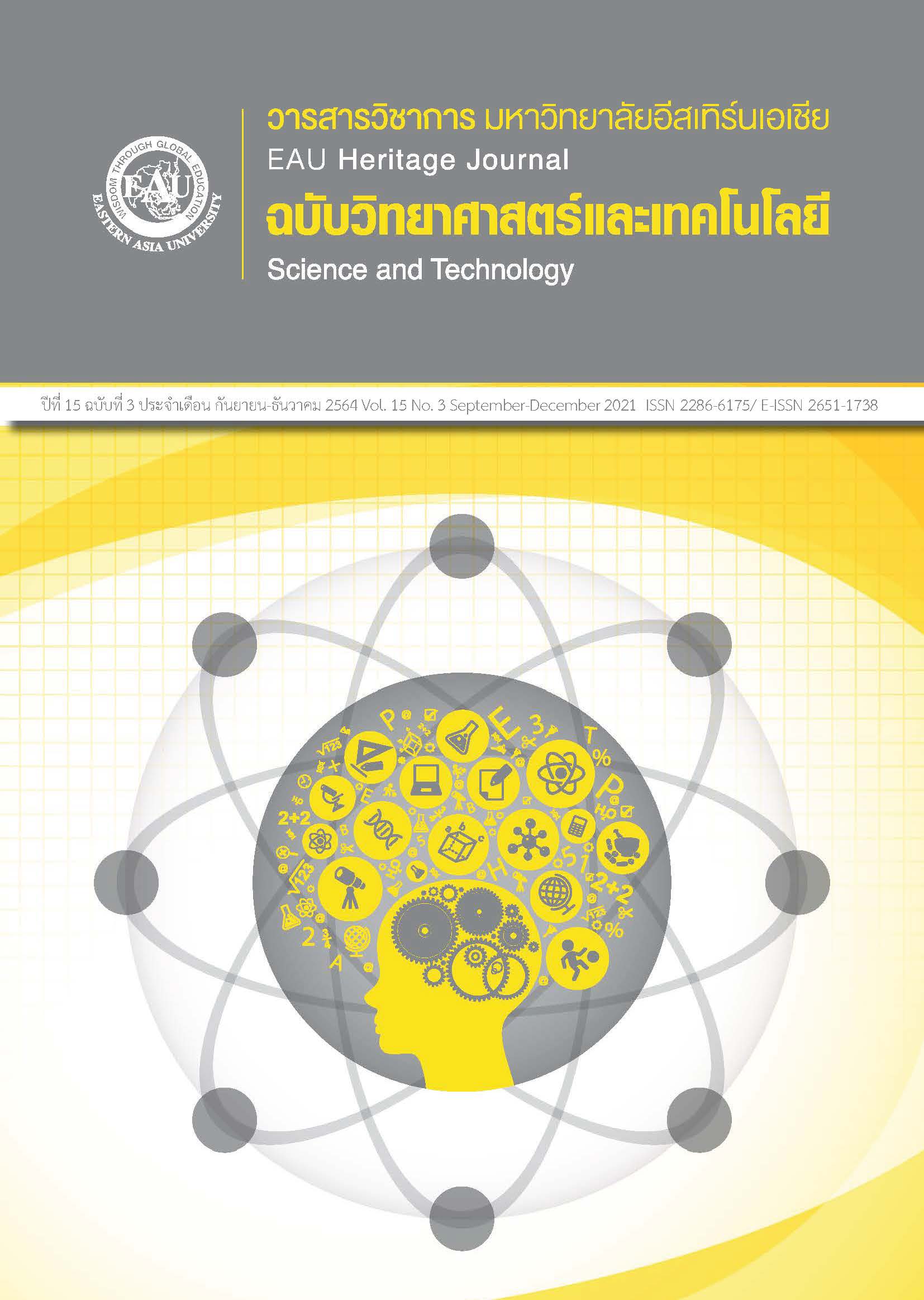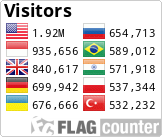การพัฒนาระบบการวัดระบบผลิตไฟฟ้าพลังงานแสงอาทิตย์เพื่อการศึกษาวิจัย
คำสำคัญ:
ระบบการวัด; ระบบผลิตไฟฟ้าพลังงานแสงอาทิตย์; โมดูลเซลล์แสงอาทิตย์บทคัดย่อ
บทความนี้นำเสนอการพัฒนาระบบการวัดระบบผลิตไฟฟ้าพลังงานแสงอาทิตย์เพื่อการศึกษาวิจัย ออกแบบโดยใช้ LabVIEW ร่วมกับระบบการรวบรวมข้อมูล (DAQ) รุ่นประหยัด NI USB-6008 จำนวน 2 เครื่อง เครื่องที่ 1 ใช้สำหรับวัดสัญญาณค่าทางไฟฟ้า ได้แก่ แรงดันและกระแสไฟฟ้าที่โหลดของระบบผลิตไฟฟ้าพลังงานแสงอาทิตย์ จำนวน 2 ระบบ และอุณหภูมิโมดูลเซลล์แสงอาทิตย์ และเครื่องที่ 2 ใช้สำหรับวัดสัญญาณค่าสภาพแวดล้อม ได้แก่ อุณหภูมิ ความชื้นสัมพัทธ์ ความเข้มแสง ความเร็วลม และความเข้มรังสีอาทิตย์ บล็อกไดอะแกรมออกแบบให้โปรแกรมทำงานวนซ้ำ (While Loop) ดำเนินการทางคณิตศาสตร์กับสัญญาณที่รับเข้ามาผ่าน DAQ ตามค่าแรงดันขาออกของอุปกรณ์วัดสัญญาณแต่ละชนิด และแสดงผลบนฟรอนท์พาแนลอีกทั้งสามารถบันทึกค่าต่างๆ ได้ตามเวลาที่กำหนด ผลการทดสอบประเมินผล พบว่า ระบบวัดที่นำเสนอมีค่าความคลาดเคลื่อนตลอดวันไม่เกินร้อยละ 3 ซึ่งสามารถนำไปใช้ในการศึกษาวิจัยเปรียบเทียบสมรรถนะการทำงานของระบบผลิตไฟฟ้าพลังงานแสงอาทิตย์ได้อย่างเหมาะสมต่อไปในอนาคต
เอกสารอ้างอิง
Ahmed, C. B., Kassas, M., & Ahmed, S. E. (2015). LabVIEW Based PV Panel Online Characteristics and Parameters Estimation. Procedia Computer Science, 52, 876–882. doi:10.1016/j.procs.2015.05.145
Chinomi, N., Leelajindakrairerk, M., Boontaklang, S., & Chompoo-Inwai, C. (2017). Design and implementation of a smart monitoring system of a modern renewable energy micro-grid system using a low-cost data acquisition system and LabVIEWTM program. Journal of International Council on Electrical Engineering, 7(1), 142–152. doi:10.1080/22348972.2017.1345226
Chivapansri, K. (2007). Graphic design of application with LabVIEW. Bangkok : SE-EDUCATION Public. (in Thai)
Fortes, R. R. A., Buzo, R. F., & de Oliveira, L. C. O. (2020). Harmonic distortion assessment in power distribution networks considering DC component injection from PV inverters. Electric Power Systems Research, 188, 106521. doi:10.1016/j.epsr.2020.106521
Isdawimah, Ismujianto, Oktariza, L. G., Frederik, A., & Loc, N. P. (2019). Investigation of Photovoltaic System parameters using LabVIEW in solar irradiance peak condition. Journal of Physics: Conference Series, 1364, 012065. doi:10.1088/1742-6596/1364/1/012065
LokeshReddy, M., Kumar, P. J. R. P., Chandra, S. A. M., Babu, T. S., & Rajasekar, N. (2017). Comparative study on charge controller techniques for solar PV system. Energy Procedia, 117, 1070–1077. doi:10.1016/j.egypro.2017.05.230
Motahhir, S., El Hammoumi, A., & El Ghzizal, A. (2019). The most used MPPT Algorithms: Review and the suitable low-cost embedded board for each Algorithm. Journal of Cleaner Production, 246, 118983. doi:10.1016/j.jclepro.2019.118983
Namhormchan, T., & Sareephattananon, A. (2014). PLC-based automatic control system of temperature and relative humidity in soilless culture greenhouse with an evaporative cooling system and fogging system. EAU Heritage Journal Science and Technology, 8(1), 98-111. (in Thai)
Namhormchan, T. (2015). Comparative study of enhanced power generation from PV Array under partial shading conditions. EAU Heritage Journal Science and Technology, 9(3), 25-34. (in Thai)
Namhormchan, T. (2018). Electric circuit 1. Pathum Thani: Eastern Asia University. (in Thai)
Namhormchan, T. (2021). Comparative study of enhanced power generation Photovoltaic Array under partial shading conditions using Magic Square Row Shifting Technique. EAU Heritage Journal Science and Technology, 15(2), 247-261. (in Thai)
Phonghirun, S., Sirininlakul, S., Phadungkit, K., Chorlumluk, P.& Boonlom, T. (2017). Effect of solar panel temperature on power output of concentrated solar system. Srinakharinwirot Science Journal, 33(2), 107-122. (in Thai)
Singh, P., & Ravindra, N. M. (2012). Temperature dependence of solar cell performance—an analysis. Solar Energy Materials and Solar Cells, 101, 36–45. doi:10.1016/j.solmat.2012.02.019
Venkateswari, R., & Rajasekar, N. (2020). Power enhancement of PV system via physical array reconfiguration based Lo Shu technique. Energy Conversion and Management, 215, 112885. doi:10.1016/j.enconman.2020.112885
Watjanatepin, N. (2015). Application of LabVIEW and compact data acquisition to study the behavior of the photovoltaic stand-alone energy system. Australian Journal of Basic and Applied Sciences, 9(special 32), 59-65.
Yadav, K., Kumar, B., & D., S. (2020). Mitigation of mismatch power losses of PV Array under partial shading condition using novel Odd Even Configuration. Energy Reports, 6, 427–437. doi:10.1016/j.egyr.2020.01.012







